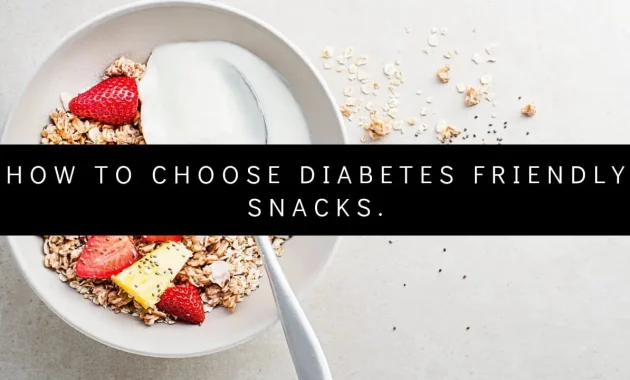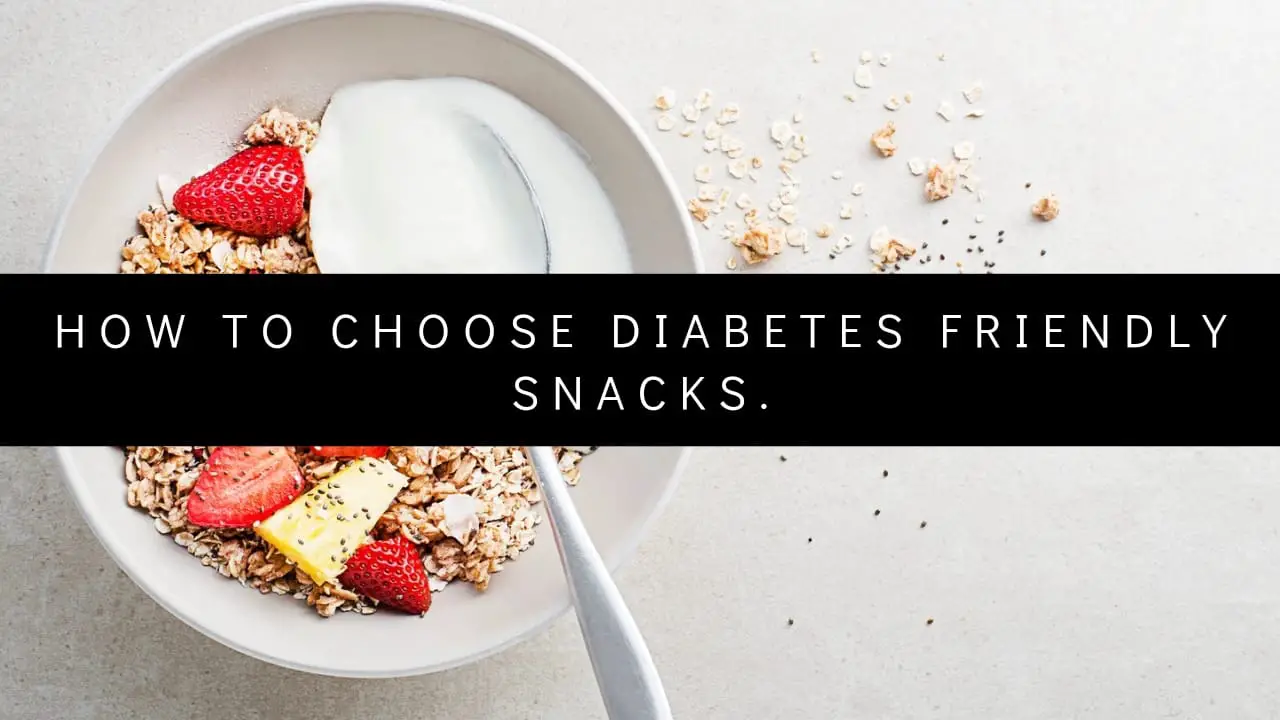
How to Choose Diabetes-Friendly Ingredients on a Budget: A Guide to Smart Grocery Shopping
Navigating the grocery store aisles can be challenging, especially when managing diabetes. The added complexity of sticking to a budget makes it even more daunting. However, eating a diabetes-friendly diet doesn’t have to be expensive. With careful planning and smart choices, it’s entirely possible to eat well, manage your blood sugar levels, and keep your wallet happy. This article provides a comprehensive guide on how to choose diabetes-friendly ingredients on a budget, empowering you to make informed decisions and take control of your health.
Understanding the Diabetes-Friendly Diet
A diabetes-friendly diet focuses on managing blood sugar levels. This involves choosing foods that have a low impact on blood glucose. The core principles include:
- Prioritizing Whole Foods: Emphasizing fruits, vegetables, whole grains, and lean proteins.
- Controlling Carbohydrate Intake: Paying attention to portion sizes and choosing complex carbohydrates over simple sugars.
- Limiting Processed Foods: Minimizing intake of sugary drinks, processed snacks, and refined grains.
- Focusing on Fiber: Incorporating high-fiber foods to help regulate blood sugar and promote satiety.
- Healthy Fats: Choosing unsaturated fats from sources like avocados, nuts, and olive oil.
Choosing the right ingredients is critical. It ensures optimal blood sugar control and overall health. This approach also helps prevent complications associated with diabetes.
Planning Your Meals: The First Step to Budget-Friendly Grocery Shopping
Effective meal planning is the cornerstone of budget-friendly and diabetes-friendly eating. It prevents impulse purchases and reduces food waste. This saves money and ensures you have the right ingredients on hand. Here’s how to approach it:
Create a Weekly Meal Plan
Start by planning your meals for the week. Consider breakfast, lunch, dinner, and snacks. This helps you visualize your food needs. Then, write down each meal and the ingredients required. This allows you to identify potential cost savings.
Check Your Pantry and Refrigerator
Before making your shopping list, assess what you already have. This avoids buying duplicates and reduces waste. Use up ingredients nearing their expiration dates. This minimizes unnecessary expenses.
Make a Detailed Grocery List
Based on your meal plan and inventory, create a detailed grocery list. Organize it by grocery store sections (produce, dairy, etc.). This streamlines your shopping trip. It also helps you stick to your budget.
Choosing Diabetes-Friendly Ingredients on a Budget: Smart Shopping Strategies
Now, let’s delve into specific strategies for selecting diabetes-friendly ingredients on a budget. We’ll focus on cost-effective options and smart shopping habits.
Focus on Fruits and Vegetables
Fruits and vegetables are essential for a diabetes-friendly diet. They provide fiber, vitamins, and minerals. They also have a low glycemic index (GI). Here’s how to save money:
- Buy in Season: Seasonal produce is often cheaper and fresher. Check local farmers’ markets.
- Frozen and Canned Options: Frozen fruits and vegetables are just as nutritious as fresh. They are often more affordable. Canned options are also budget-friendly. Choose options packed in water, not syrup or added sauces.
- Bulk Purchases: Buy large quantities of non-perishable items like onions and potatoes. Store them properly to prevent spoilage.
- Grow Your Own: Consider growing herbs or vegetables at home. Even a small herb garden can save money.
Select Affordable Protein Sources
Protein is crucial for managing blood sugar and maintaining satiety. It also supports muscle health. Here’s how to find affordable protein sources:
- Eggs: Eggs are a versatile and inexpensive source of protein. They are also low in carbohydrates.
- Beans and Lentils: These are excellent sources of protein and fiber. They are also very affordable. They can be used in various dishes.
- Canned Tuna and Salmon (in water): These provide lean protein and omega-3 fatty acids. They are often cheaper than fresh fish.
- Chicken and Turkey: Buy whole chickens or turkey breasts. These are often more economical than pre-cut pieces.
- Plant-Based Protein: Tofu and tempeh are excellent choices. They are also budget-friendly.
Choose Healthy Carbohydrates Wisely
Carbohydrates impact blood sugar levels. Choosing the right types is crucial. Here’s how to save money on healthy carbs:
- Whole Grains: Oats, brown rice, quinoa, and whole-wheat bread are better choices. They are higher in fiber. Look for sales and buy in bulk.
- Sweet Potatoes: These are a nutritious alternative to white potatoes. They are also relatively inexpensive.
- Limit Processed Grains: Avoid white bread, white rice, and sugary cereals. These offer little nutritional value.
- Portion Control: Regardless of the carb source, pay attention to portion sizes. This helps manage blood sugar levels.
Incorporate Healthy Fats
Healthy fats are essential for overall health. They also help with satiety. Here’s how to find affordable options:
- Olive Oil: Buy olive oil in larger bottles. This often works out cheaper.
- Avocados: Avocados can be a bit pricey. Buy them when they are on sale. Freeze extra avocados for later use.
- Nuts and Seeds: Nuts and seeds provide healthy fats and fiber. Buy them in bulk. Store them properly to maintain freshness.
Smart Shopping Habits for Diabetes Management
Beyond ingredient selection, smart shopping habits are essential. These habits help you stay within budget and make healthier choices. Here are some tips:
Shop with a List and Stick to It
A grocery list is your best friend. It prevents impulse buys. It helps you avoid unhealthy temptations. Stick to your list as closely as possible. This ensures you buy what you need.
Avoid Shopping When Hungry
Shopping on an empty stomach leads to poor choices. You are more likely to buy unhealthy, processed foods. Eat a meal or snack before you go. This helps you make rational decisions.
Compare Prices and Read Labels
Don’t always assume the most expensive item is the best. Compare prices per unit. Read food labels carefully. Look for added sugars, sodium, and unhealthy fats. Choose the healthier, more affordable option.
Take Advantage of Sales and Coupons
Look for sales and use coupons. This can significantly reduce your grocery bill. Sign up for store loyalty programs. These often offer discounts and special deals.
Buy Generic Brands
Generic brands often offer the same quality as name brands. They are usually cheaper. Try generic options for staples. You might be surprised by the savings.
Cook at Home More Often
Eating out is often more expensive than cooking at home. Prepare your meals at home. This allows you to control ingredients and portion sizes. It also helps you save money.
The Role of Education and Support
Managing diabetes is a journey. It requires continuous learning and support. Here’s how to stay informed and connected:
Consult a Healthcare Professional
Work with a doctor, dietitian, or certified diabetes educator. They can provide personalized advice. They can also help you create a meal plan. This plan suits your needs.
Join a Support Group
Connect with others who have diabetes. Share experiences, tips, and recipes. This can provide emotional support and practical advice. [See also: Benefits of Diabetes Support Groups]
Stay Informed
Keep up-to-date on the latest research. Learn about diabetes management and nutrition. Reliable sources include the American Diabetes Association. Also, check the National Institute of Diabetes and Digestive and Kidney Diseases.
Putting It All Together: A Sample Grocery Haul
Here’s a sample grocery haul to give you an idea of what to buy. This list focuses on budget-friendly, diabetes-friendly ingredients:
- Produce: Apples, bananas, spinach, carrots, onions, sweet potatoes.
- Protein: Eggs, canned tuna (in water), chicken breasts.
- Grains: Rolled oats, brown rice, whole-wheat bread.
- Dairy/Alternatives: Plain Greek yogurt (unsweetened), unsweetened almond milk.
- Fats: Olive oil, nuts (almonds, walnuts).
- Other: Beans (canned or dry), lentils, frozen vegetables.
This list provides a variety of nutrients. It is also affordable. It provides a solid foundation for a diabetes-friendly diet.
Conclusion: Empowering Your Health, One Choice at a Time
Choosing diabetes-friendly ingredients on a budget is achievable. It requires planning, smart shopping, and consistent effort. By following the strategies outlined in this guide, you can take control of your health. You can also manage your blood sugar levels. You can also do this without breaking the bank. Remember that every choice matters. Each healthy meal brings you closer to your goals. Embrace the journey. Eat well. Stay healthy. Live fully.
Remember to always consult with your healthcare provider. They can provide tailored advice. They can also help you create a personalized plan. This plan aligns with your specific needs and medical history. This is key for effective diabetes management.
By choosing diabetes-friendly ingredients, you are investing in your long-term health. You are also making a positive impact on your overall well-being. Make smart choices. Enjoy delicious, nourishing meals. Take charge of your health. It is a journey worth pursuing.

